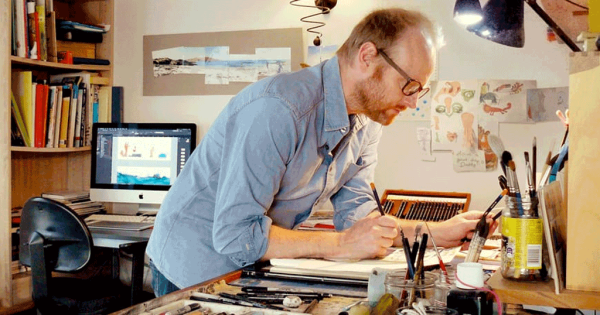We chat to children’s illustrator and author Chris Naylor-Ballesteros about his latest characters – Frank and Bert. Plus, we find out what he feels are the key ingredients for a good children’s picture book.
Why not put the kettle on, get yourself comfy and join us for this month’s coffee-break interview…
Interview with Author Chris Naylor-Ballesteros

For those who are yet to discover your books, what three words best describe Chris Naylor-Ballesteros?
English, French, Cheesy Wotsits Fan.
That’s technically five Chris. But, seeing as we’re also fans of Cheesy Wotsits, we’ll give you that 😉
Caro, UK Mums TV Editor
You studied illustration and graphic design at Bradford College of Art – did you aspire to be a children’s book illustrator and author? Or was that a happy accident?
No, I didn’t aspire to it. In fact it never occurred to me back then and with hindsight that seems really odd.
I went to Bradford Art College in 1999 just for a year because I was leaving for France and had about a year left in the UK so decided to try to do something useful or at least interesting.
I could always draw quite well so went for an illustration/graphic design course.
The course was great and opened my mind and gave me confidence.
But I only thought about making picture books quite a few years later when I started reading them to our children when they were small.
What do you think are the key ingredients for a good children’s book?
I think the main thing (and one of the most difficult things to do) is finding a story that feels like it tells itself. Or that could’ve really happened no matter how surreal or bizarre it is.
It has to feel credible and not need a bit of a push, here and there, from the writer.
Once that’s in place the rest of the job is just finding the best way to tell it.
What comes first – the illustrations or the story?
I don’t have a set way of working. I’m generally a bit disorganised, and also in thinking about stories.
But by default I usually think about ideas first and try to have something that vaguely works in my head before I start sketching.
Having said that, at least two books (‘The Suitcase’ and ‘Frank and Bert’) developed out of a doodle or a sketch.
When you were a child, which books did you love to read most? Did you have a favourite author?
I still have my favourite childhood book – ‘Amos & Boris’ by William Steig.
I’ve owned the same copy for over forty years. He’s better known for creating Shrek (long before it became a mega film franchise) but Amos & Boris is a really beautiful and gentle story about a mouse and a whale.
They save each other’s lives and become best friends but know they can’t see each other again.
Then they say goodbye and cry at the end. It’s quite intense when you’re seven, or forty-seven for that matter.
I loved Quentin Blake too, of course. He seemed to be everywhere and always made me pick up a pencil and try to do an effortless, scribbly Quentin Blake sort-of drawing and always fail because he’s a bona-fide genius.
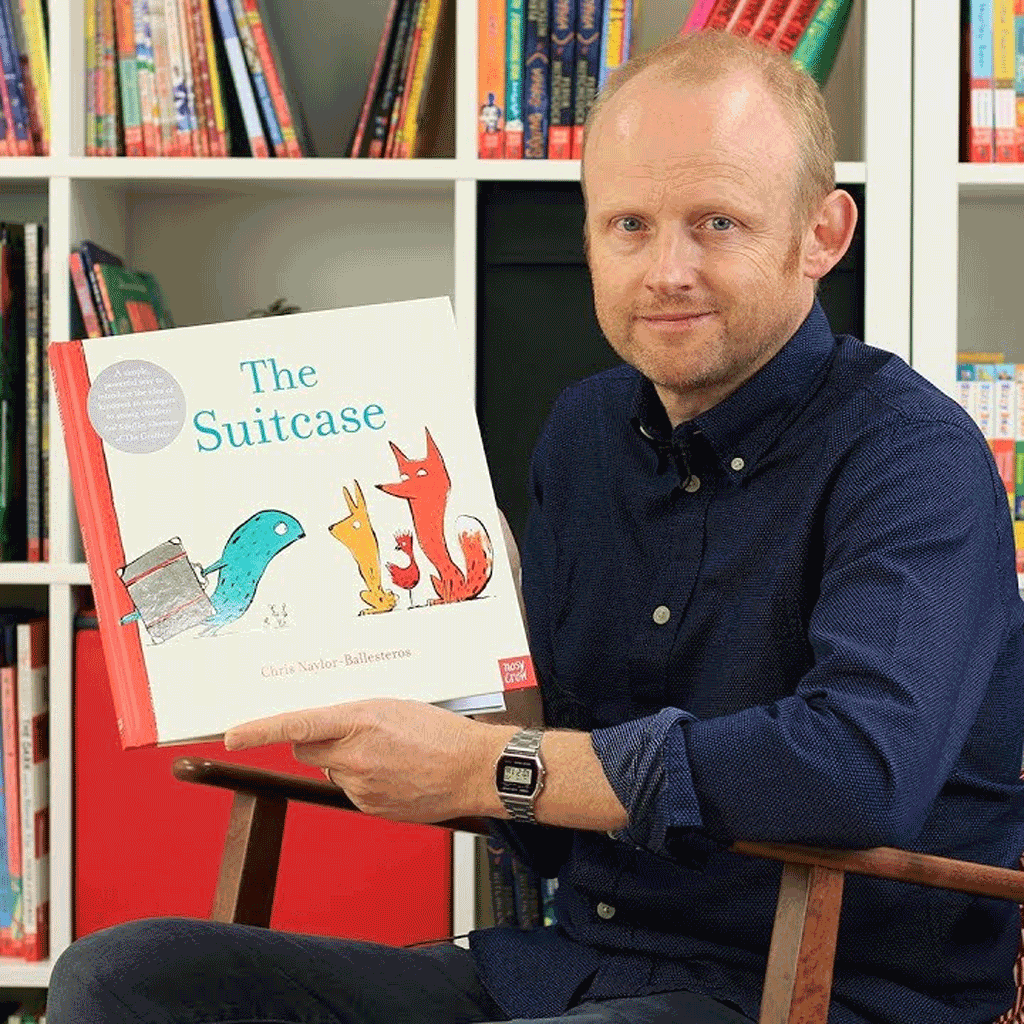
Your books have been for younger children, would you ever consider creating a story for a slightly older audience?
Yes, I’ve got a few chapter book ideas that are in various stages of development.
I sometimes think it’d be easier to tippety-tap on a keyboard than mess about with ink and paint but the grass is always greener.
Although, I do always get anxious about the illustrations when I’m starting a new book. I can never imagine it actually being done and getting finished, even though they always do.
So writing instead of illustrating feels like it’d be less stressful. I’m pretty sure I’m wrong though.
Tell us about your latest characters Frank and Bert?
Frank is a fox and Bert is a bear and they’re best friends.
Frank is a bit more worldly-wise and knowledgeable than Bert. Bert seems a bit more naïve and instinctive.
I always say Frank knows things whereas Bert feels things, but they both get it right in the end.
They have fall-outs and misunderstandings but really love each other and always help each other out and try to make each other happy.
Each book features an everyday activity that children can relate to (playing hide-and-seek or learning to ride a bike) and some sort of dilemma or difficulty in their friendship that they have to sort out. And often there’s a little twist at the end that turns the tables a bit.
Your beautiful illustrations and stories cover some fairly grown up themes such as trust, confidence, tolerance and kindness, how do you translate these values for little readers to understand?
Thank you! The animal world is very useful for this because animal characters can do the same things as children do; and have the same day-to-day problems but there aren’t any restrictions on their lives.
They can travel around the world on their own or play out in the woods till whatever time they like.
We can exaggerate things but they still feel relatable. Perhaps it’s also that I write in a fairly straightforward fashion. I usually try to tell the story in as direct a way as possible and have dialogue that feels informal and natural to young readers.
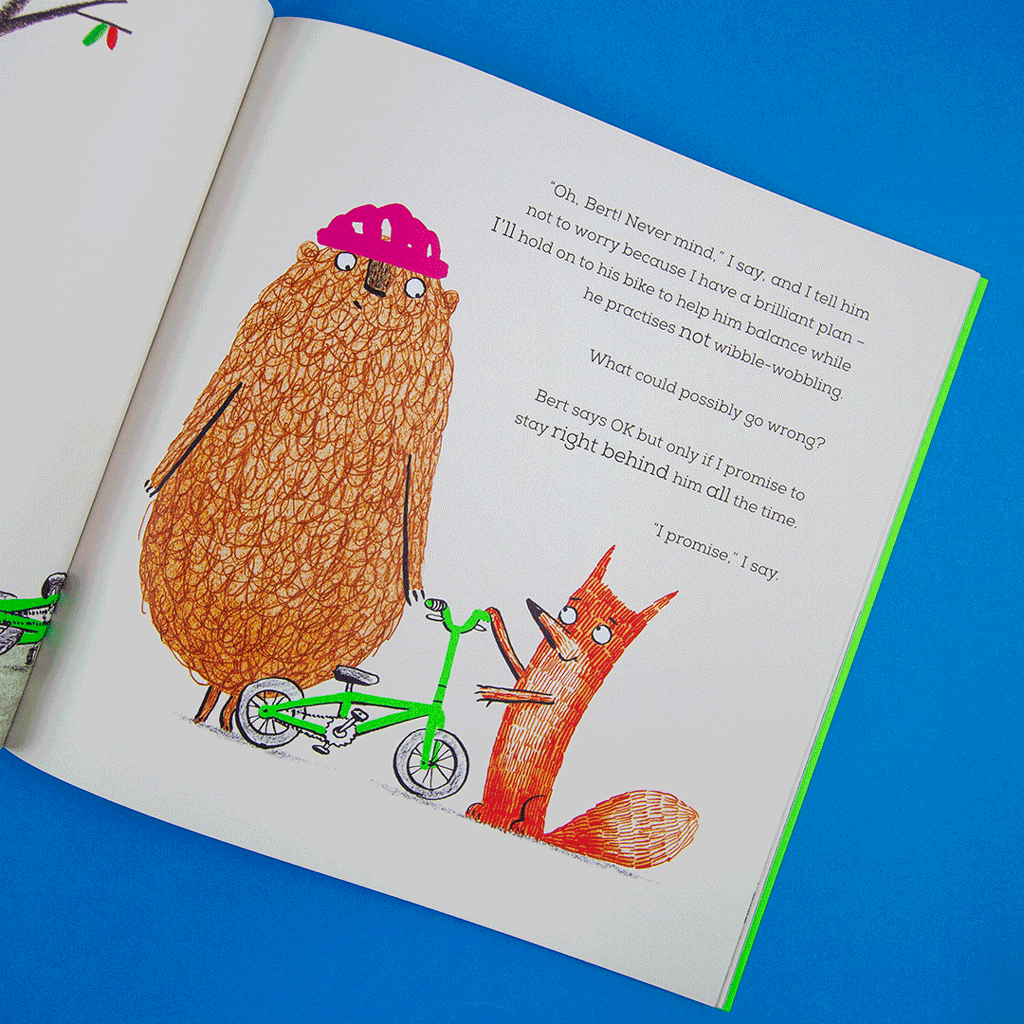
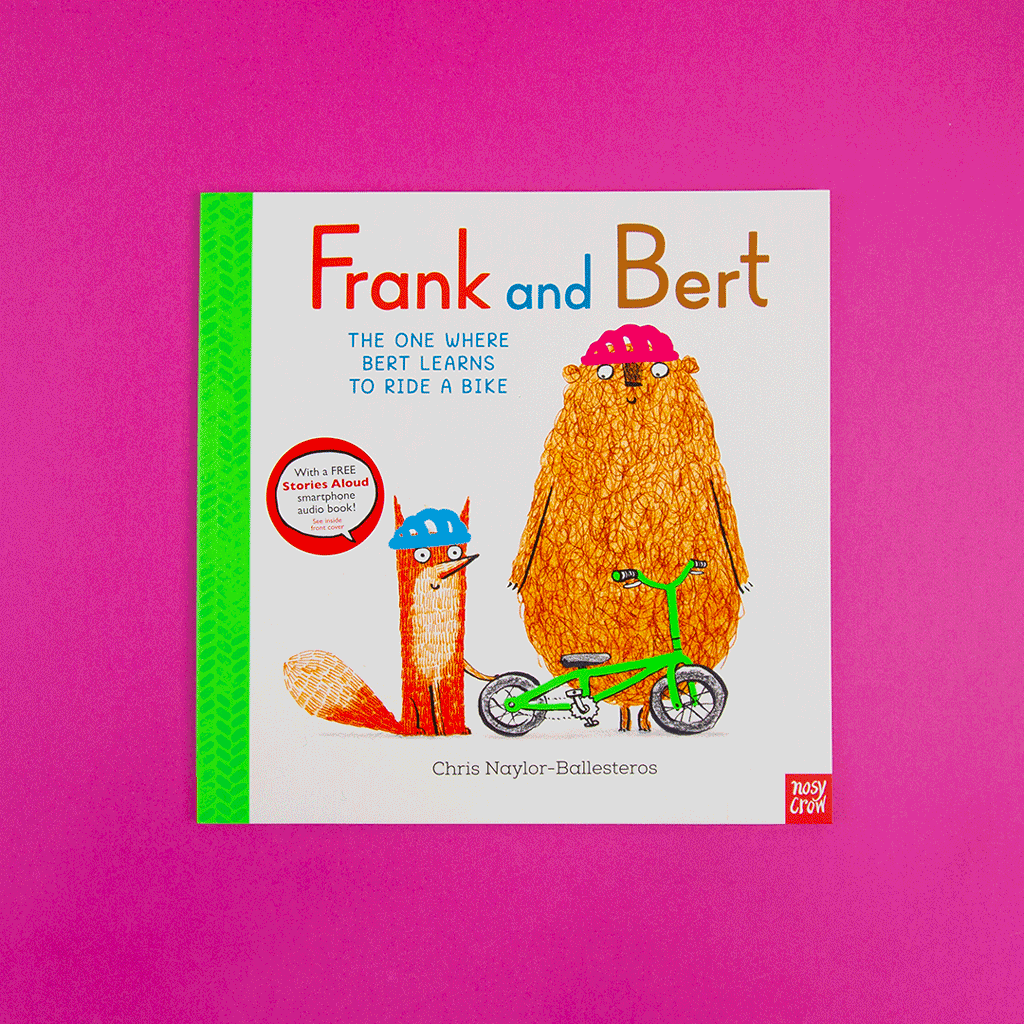
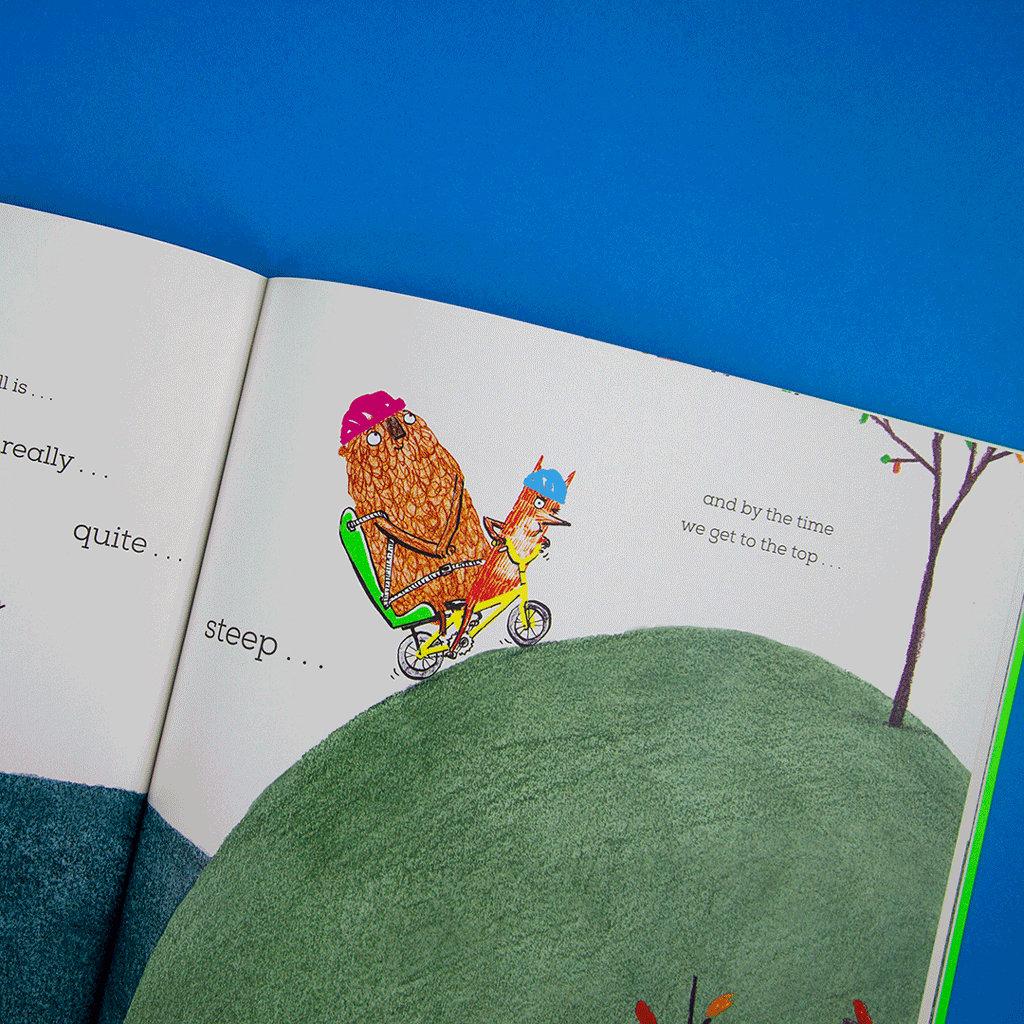
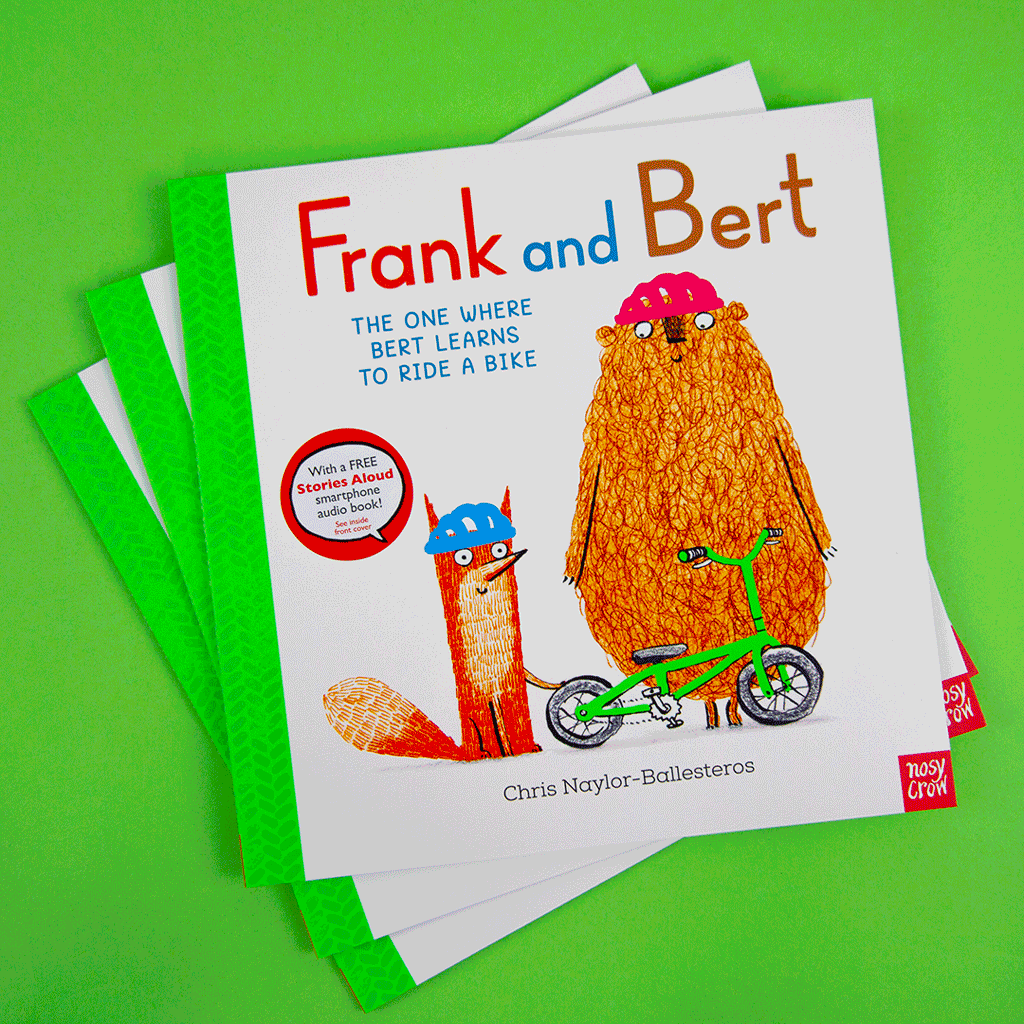
What advice would you give to a budding author/illustrator of children’s picture books?
Well, I was a late starter so first I’d say get to it!
My first book wasn’t made with publishing in mind, I just did it for me and my kids. I think that might be good advice – try not to make ‘being published’ your goal. The goal should just be to make a book or illustrate a story for the sake of doing it, and because you’re compelled to do it or enjoy doing it.
And if you can take a step back when it’s finished and think it looks ok, then think about sending it out.
That’s what I did and in fact no one wanted to publish it. But a year or two later I learned from what didn’t work and made another and that one got accepted.
Do you have any more books planned for the Frank and Bert series in the coming months/year?
Yes! I’m working right now on book number three (there will be mild picnic-based peril) and there will be at least four in the series over the next year or two.
Finally, what’s your preference – digital or analogue?
They’re different parts of the process and I use both.
All the images in my books are scanned from actual pencil, ink or paint on paper, but there’s a lot of digital work that happens afterwards, whether in composition, tweaking colours or fixing mistakes.
Apart from that I’ve never illustrated using digital brushes and painting but I probably would if I had the equipment and skill. I think it’s just as hard to illustrate well digitally as it is on paper, the main difference is you don’t have an ‘undo’ button on your lovely sheet of expensive watercolour paper.
_______________________________
Thanks so much for your time Chris, we really enjoyed getting to know you.
The Frank and Bert series is published by Nosy Crow and available to buy now.
Next month’s coffee-break interview is with children’s author Isabel Otter.

